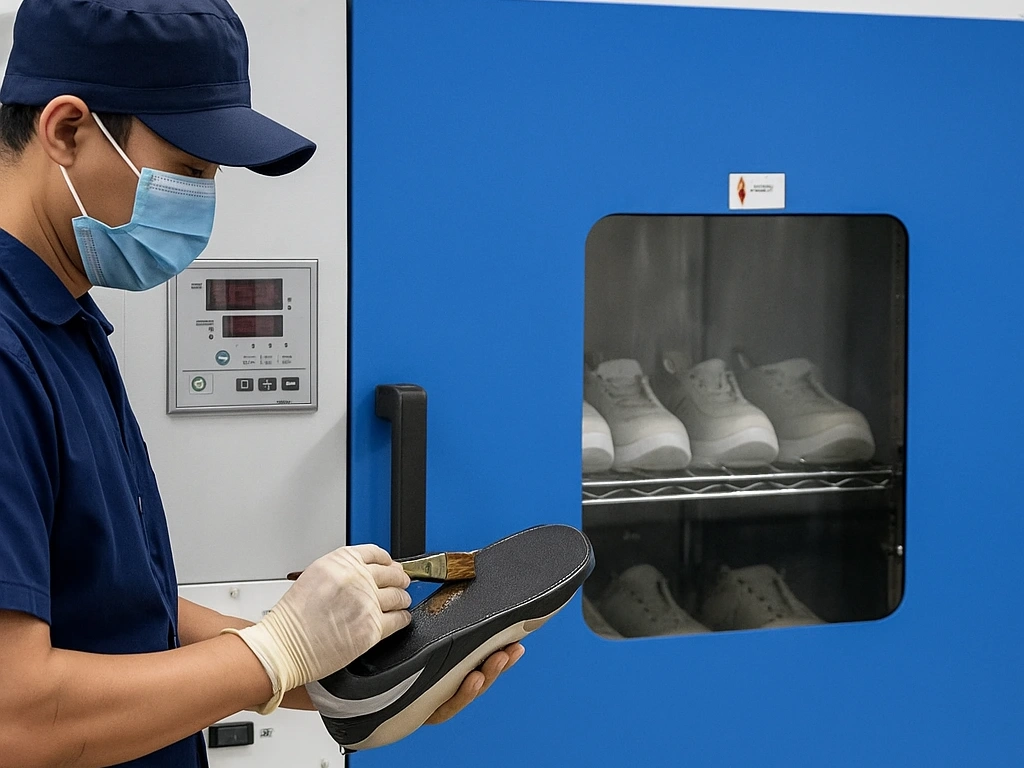In modern footwear production, adhesive curing time represents a critical bottleneck affecting overall manufacturing efficiency. The process of shoe adhesive curing refers to the chemical and physical transformation where liquid adhesives develop structural integrity through cross-linking or solvent evaporation. For manufacturers seeking to speed up shoe adhesive curing, understanding and controlling this process can lead to significant throughput improvements while maintaining bond quality standards.
Understanding the Curing Process
Adhesive curing is the transformation from liquid to solid state that creates durable bonds in footwear assembly. In production settings, this process typically involves one of three mechanisms:
Evaporation: Solvent-based adhesives dry as carriers evaporate
Chemical reaction: Two-part systems cure through molecular bonding
Cooling: Hot melt adhesives solidify as they lose heat
The curing mechanism varies substantially between different adhesive chemistries commonly used in footwear assembly:
Polyurethane (PU) adhesives undergo moisture-curing, where atmospheric water reacts with isocyanate groups to form urea linkages. This explains why humidity control becomes particularly important for PU systems. In contrast, neoprene-based contact cements achieve bonding through solvent evaporation, making airflow and temperature the dominant acceleration factors.
The most common challenge manufacturers face is balancing faster curing times with final bond strength and flexibility requirements.

Effective Acceleration Methods
Heat Application
Infrared radiation has emerged as the most efficient thermal method for accelerating shoe adhesive curing in production environments. Unlike conventional hot air systems, infrared energy penetrates the adhesive layer directly, with mid-wave infrared (3-6 μm wavelength) showing particular effectiveness for most shoe adhesive formulations. Modern infrared tunnel dryers can reduce typical curing times from hours to minutes while maintaining precise temperature control to prevent material damage.
Properly configured infrared tunnels can reduce typical curing times by 70-80% compared to air drying.
Key parameters include:
Optimal temperature range: 60-80°C (140-176°F)
Exposure time: 2-5 minutes for most adhesives
Wavelength selection: Medium-wave IR works best for penetrating adhesive layers
For heat-sensitive materials, conductive heating through pre-warmed lasts or molds provides gentler acceleration. Some advanced facilities employ radio frequency (RF) heating, which generates heat volumetrically within polar adhesive components. This method proves especially effective for thick adhesive layers or multi-layer bonding applications.
Pressure Optimization
Controlled pressure application remains one of the most reliable methods to ensure rapid bond formation. Modern hydraulic pressing systems can deliver up to 15 psi with programmable pressure profiles that accommodate different shoe constructions.
Precision pressing ensures complete contact between adhesive and materials. Modern systems provide:
Programmable pressure profiles (5-15 psi)
Adjustable dwell times (30-90 seconds)
Temperature-controlled platens for heat-assisted bonding
Automated Application
Automated adhesive application systems contribute to curing acceleration indirectly by ensuring optimal glue film thickness. Robotic dispensing systems improve curing efficiency by:
Maintaining consistent adhesive thickness (0.1-0.3mm ideal)
Reducing excess glue that slows drying
Enabling precise pattern application

Simplified Chemical Solutions
The use of chemical accelerators requires careful formulation matching:
Water-based adhesives: Use formulated accelerators that maintain flexibility
PU systems: Moisture-control additives can reduce curing time by 30-40%
Contact cements: Solvent blends optimize evaporation rates
For polyurethane systems, amine-based catalysts can reduce curing time by over 50%. However, excessive accelerator concentrations may compromise final bond flexibility – a critical parameter for footwear durability.
Plasma surface treatment prior to adhesive application serves as a physical-chemical acceleration method. Low-temperature plasma modifies surface energy through micro-cleaning and functional group formation, significantly improving wetting and chemical bonding initiation. Atmospheric plasma systems have become particularly viable for inline processing.
Advanced Options
Newer technologies like UV-curing systems provide near-instant bonding for certain materials, while low-temperature plasma treatment can improve adhesion without chemical primers.
Standardized peel tests,flex endurance evaluations, and environmental aging tests should accompany any process changes. Particular attention should be paid to the plasticizer resistance of accelerated bonds, as this often reveals curing-related weaknesses not apparent in initial strength tests.
Final Thought
The selection of appropriate acceleration methods depends on specific adhesive chemistry, substrate combinations, and production requirements. A systems approach combining thermal, chemical, and mechanical acceleration methods typically yields the best balance between speed and quality. As adhesive technologies continue evolving, footwear manufacturers should maintain flexibility in their bonding processes to incorporate new acceleration methodologies.
